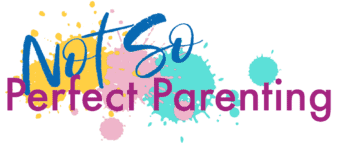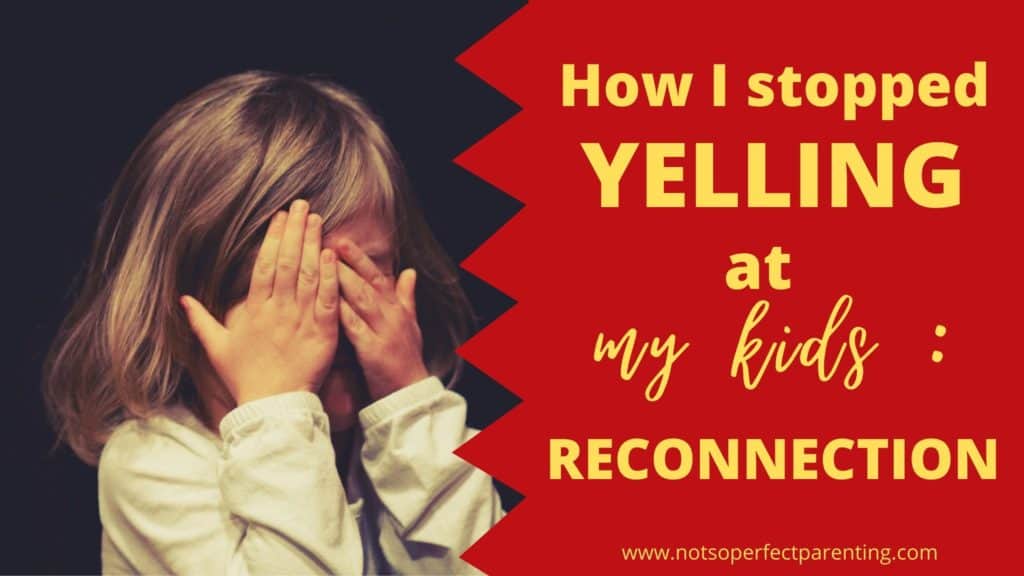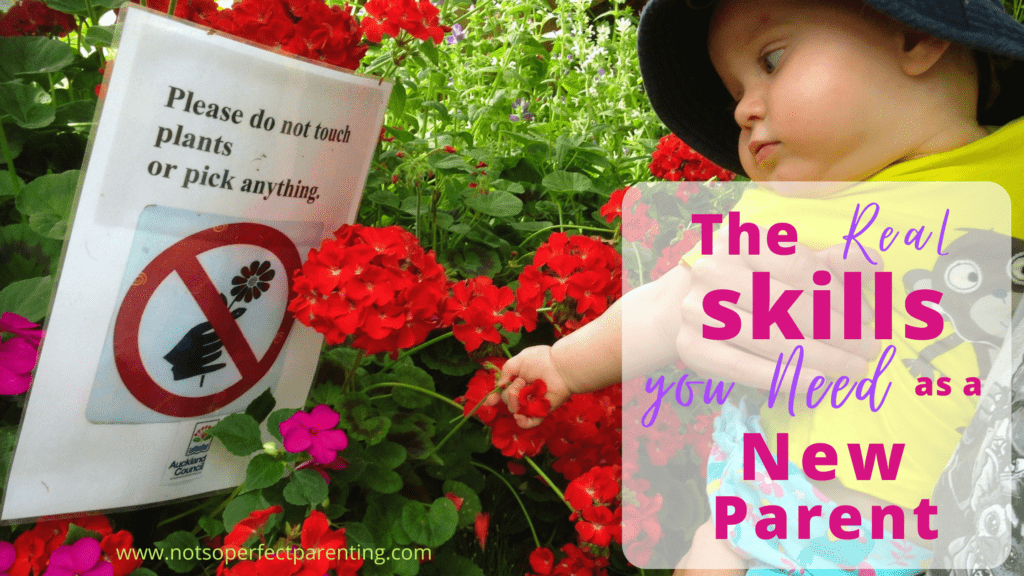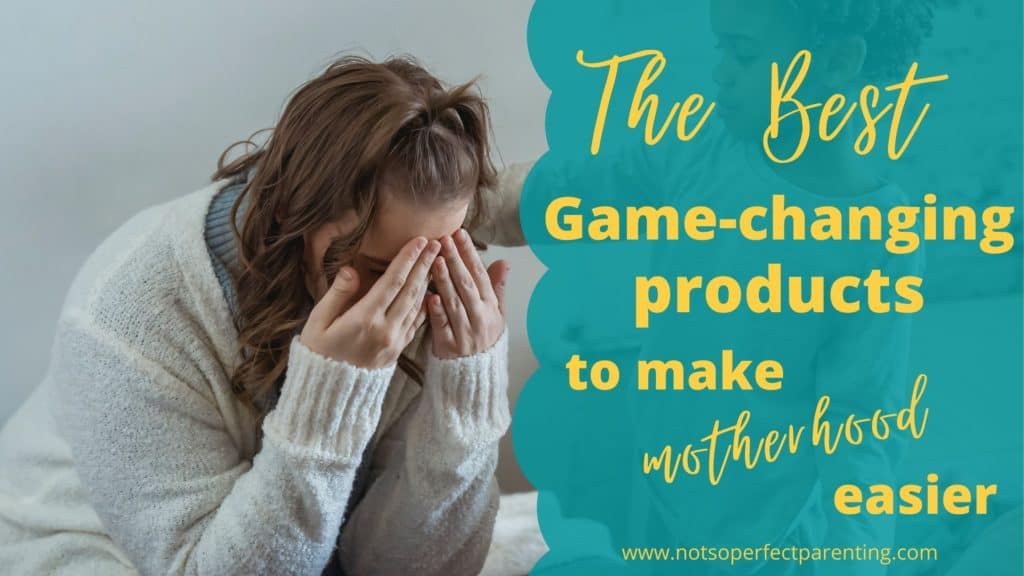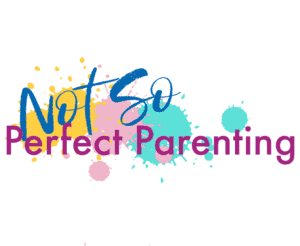A couple years back I went through a very YELLY phase with my kids, then realised how uncool that was and did some work on myself, so I could stop yelling at my kids.
Regrettably, it still happens now and then, and I don’t like it. But these days, instead of obsessing about ME and What’s Wrong With ME, and how I need more Me-Time, more bubble baths etc, I put the focus on my kids and make sure they are okay.
I try to focus on rebuilding and reconnecting with them.
Oddly enough, this shift in focus to reconnecting has helped immensely with lessening the times I resort to yelling.
I do happen to think self-care, and reflecting on my triggers is important for managing my stress. This means I’m less likely to yell at my girls when things get tough.
However, in the moments after it’s happened, the best thing I can do for our relationship is put all my efforts into repair.
So instead of having a guilt-fest about how much I yell, I deal with how my children are left feeling all the yucky things they must feel after being yelled at.
Disclaimer; I’m not a doctor or medical professional. The words in this post are only my thoughts and opinions and if you choose to act on any suggestions those are your own decisions and responsibility.
My moment of yelling at my kids that changed me
At the end of the school holidays, boredom was growing like mould. Each passing day seemed more full of meltdowns.
We had just arrived home from a park visit. The girls flopped out of the car, leaving bags and shoes, and screaming over who opens the front door.
So my wind-up starts. I rant about how they never help unload the car, then move onto how they always fight the second we get home.
Ignoring me, my eldest helps herself to some crackers, clumsily dropping crumbs on the floor.
This is the moment I remember clearly losing it; because of cracker crumbs.
I remember yelling and grabbing one of them by the shoulder and squeezing. Inside RAGE bubbled, and a tiny voice inside my head begging me to stop. I looked at her face.
The fear in her sweet eyes.
I quickly locked myself in the bathroom to calm down. Whatever they got up to for the next five minutes would be safer than having me around. I was shaking with rage.
All she had done was drop cracker crumbs on the floor. My hand squeezing tighter. At that moment I hadn’t known how to stop myself.
The next day I went to the doctor to ask for help and started working on myself. I couldn’t risk getting to that place again; where I felt no control.
I had been defining my behaviour as just Yelling, but the reality was I was creating a tense and rage-fuelled home environment.
My scary point was when the yelling stopped having any effect. I felt like actually hurting them. That terrifying realisation while I battled within myself, locked in the bathroom, is what made me seek real change. It just felt like there was nothing stopping me anymore.
The world was no longer safe. For me or my little ones.
Digging deep into triggers to find out why I yell at my children.
In my search to learn about how to not yell at my children, I learnt a lot about my personal triggers and connections to my own childhood.
While my childhood was full of opportunity, and I had well-intentioned, loving parents, it wasn’t without tension, criticism and conflicts. There was definitely anger and yelling and I can see the connection between my childhood and my own parental anger.
I’m still working through a lot of my triggers and sneaky beliefs about inadequacy that continually crop up. When I read this article about parenting your own inner child, so much of it resonated and helped me start to question deeper about my own triggers that lead me to yell.
There’s no way I want to pass this behaviour on to the next generation. The children need help to heal too.
All the soul searching homework into myself was interesting, but in the heat of the moment, I needed something else.
The child-focused trick that stopped me yelling at my children.
In all the advice and strategies I researched few mentioned reconnection with the children. Until I came across Kelly Holmes’ simple and effective, science-backed, Hair Tie Trick.
Kelly explains it much better and more in-depth than I do, but basically:
- I start the day with 5 hair ties on my left wrist. The goal is to have all 5 hair ties stay / back on my left wrist at the end of the day.
- If I yell, or lose my temper or over-react, I have to put one of the hair ties on my other wrist.
- So, if I mess up, I have the chance to earn the hair tie back by working on 5 moments of connection.
The visual reminder of 5 hair ties, 5 chances to not yell at my girls, made me so much more aware of my behaviour, my triggers and when I was allowing myself to get wound up.
Why this trick worked so well: RECONNECTION
I let the girls in on the hair tie plan too because I wanted them to know that I was working to be calmer. They were very supportive and helped point out to me when I needed to lose a hair-tie.
However, the real magic came when I slipped up though. The work of creating 5 moments of connection in order “to earn back” a hair tie, was where the beauty was.
As I read my little one a book, and she snuggled into me, I would feel my resentment slip away. When I saw my eldest relax when I smiled at her, I would feel seen. Or if we played dress-ups before making dinner, I lost track of time and actually forgot about all the “jobs” that I had to do.
When I feel In Connection with my daughters it feels like I’m listened to more often. I’m better at reading their cues, rather than whatever my agenda is, and I can meet them halfway.
I haven’t taken notes and recorded the data on how much calmer we feel, but I notice myself breathing through difficult moments, and my eldest especially seems less on edge when we’re in good connection.
Steps to help reconnect with your child
While it may be a lot of work, in the process of trying to mend the bond and re-establish the connection to your child, you’ll also go some way to heal the need to yell.
Even spending ten minutes devoted to child-led playing can let them know you like being in their company, can start to re-establish their feeling of some control and trust between you.
Kelly Holmes has printable resources on her website for quick ideas on reconnection activities.
When things explode badly in our household, these are the steps we try to follow:
1. Let everyone calm down
Take a break from each other if you can. Easier said than done, I know. Finding clever sneaky ways to help find your off switch when you’re raging deserves its own superhero movie.
Lately, instead of staying in the ring, I’ve been stating “I need to walk away, so I can calm down” and removing myself from the physical area of the drama.
For years I rejected doing this because my perspective of walking away was Not Dealing with conflict. What I now realise is that by staying in there while in that flight or fight response, I’m just feeding the drama.
By removing myself I’m modelling a calm way to disengage from an out of control situation.
2. Apologize to your child and model how to deal with failure
Apologize. Let them see that no parent is perfect.
Modelling that ‘Yes, sometimes even adults get things wrong’.
Mistakes and failures happen, but how we choose to deal with our undesirable reactions really shows our character, and whether we are able to make changes for the better. Letting them see how we deal with mistakes can actually help our children learn to deal with their own frustrations when they boil over.
If they see us apologize, rather than bottle it up, then they will understand and be able to find ways to apologize too. Take responsibility for their actions, rather than keep fighting and blame someone else.
Explain to them what’s going on for you. That the responsibility to stop yelling is on yourself and that you’ll work on that. Even if the trigger might have been the child, the way we respond as an adult is up to us.
I know at this point it might be tempting to open up the conversation to ask them if they want to help you with that by adjusting their behaviour….. but honestly, trust in the behaviour modelling to teach them.
3. Invite your child to talk about how your yelling made them feel
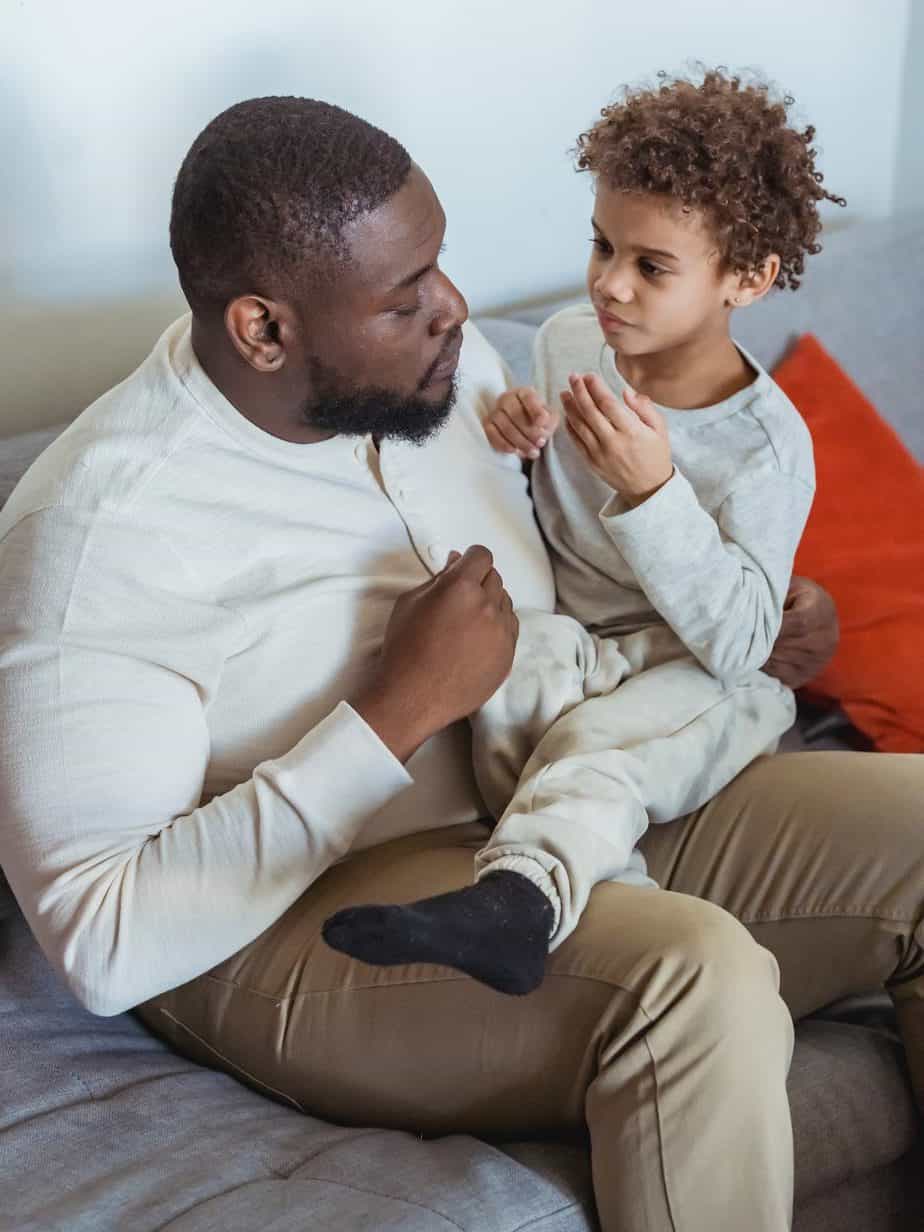
Let them know you’re willing to just listen to them talk about how your yelling made them feel.
Let them know you’re just going to listen, that there’s no judgment.
This is about your child getting it out, so they aren’t ruminating on their feelings.
When they talk to you and see you just listening, holding space for them, THAT is what rebuilds your bond.
And for you, this is about being witness to the inner thoughts of your child in a scary situation. It’s NOT about reacting or trying to control their response.
And yes it’s hard, they might feel quite angry at you, and blame you for it all. And you have to just listen calmly, unreactionary.
If it helps set a timer so they get to talk for a whole minute and you won’t say anything.
4. Hold space for your child’s emotion
It’s easy to forget that we don’t have to jump in and fix everything for our children.
In the early days of becoming a parent, it’s almost like the pure vulnerability and helplessness of our baby trains us to be completely at their disposal. As they grow though, we need to consciously relearn how to gradually separate and give them space again.
We don’t need to fix everything or control the outcome for them.
When it comes to emotion, and kids have BIG emotions, sometimes we want to just take the pain away or keep them safe. Or we tell them to ‘Calm down’.
What would the world be like if we were taught from a young age an emotional vocabulary grown from our caregivers acknowledging our feelings?
Acknowledging that these feelings were in us, but that they would pass. That we’re feeling these powerful things, but making clear that we aren’t identified by them. We feel anger, we aren’t anger itself.
When my five-year-old is struggling through a moment and it turns into a confrontation, I currently try saying this:
"I can see you're feeling upset. Would you like me to just sit with you until it passes?"
She doesn’t always accept the offer, but I’m trusting that the message has been planted.
5. Physical connection with your child

Touch is a wonderful way to repair the bond between you and your child.
Having a hug is my immediate response. The built-up tension can be dispelled with a physical connection.
Our bodies crave touch and relax when they get it. It releases all sorts of good juicy brain chemicals like Oxytocin
Or do a physical activity together. Kick a ball between you, go for a walk and collect leaves.
6. Let your child lead an activity
Engage in an activity with them and let them take the lead. I think of this as letting them have a little bit of control, so they don’t feel like they are in an uncontrolled environment. That they get some say in how they can affect the world around them.
If you’re really stuck for some suggestions, Here is a jumbo directory of play ideas I found that I regularly let my kids choose from. My girls love Sleeping Lions, and my husband loves it because he gets to say all his bad Dad jokes in an effort to make them laugh.
If you like this post please share, or get in touch and tell me what your thoughts are. I love hearing from my readers.
Lastly, if you want to know more about what I hope you’ll find at Not So Perfect Parenting, read my post on 5 Things I want to help my audience with.
